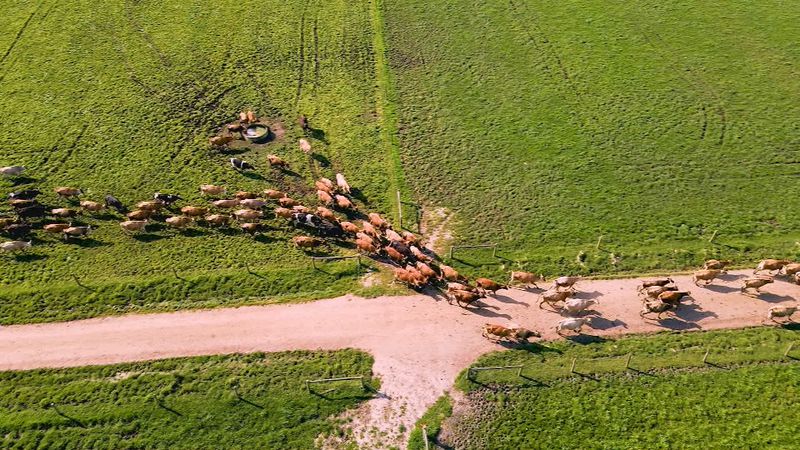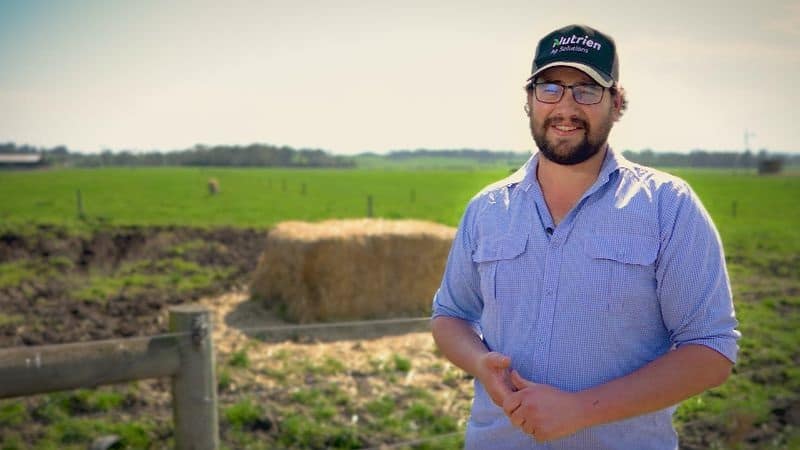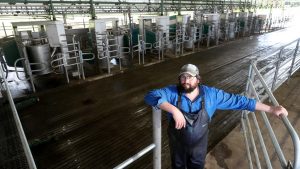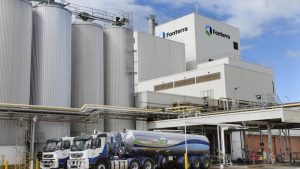
The dairy industry has now shrunk so much Australians can barely afford their own local products.
But there are plenty still willing to roll up their sleeves and tackle the issue.
In South Gippsland, gentle encouragement from farmer Benjamin Vagg is all that’s needed as 420 dairy cows head in for their afternoon milk. After all, this is $900,000 on the move.
He starts his day at 5.30am, seven days a week.
At 34, Vagg is half the age of the average Australian dairy farmer. Rarer still, he’s enthusiastic about it.
“We have some of the best dairy farmers in the world In Australia,” Vagg said.
“It’s amazing. I know I wouldn’t want to be in an office.
“In fact, I started my career out in a suit trying to be someone in a corner office in Melbourne somewhere, and then decided, ‘Nah I didn’t want to do that,'” he said.
But not everyone is as keen on farming as Vagg. In 1980, 20,000 Australians made money milking cows back. Today, fewer than 4000 are left.
Michael Whitehead from ANZ’s Agri-Insights said Australian milk production was dropping every year, and this year was set to be the lowest in three decades.
Whitehead has been watching closely and he says this is why dairy products are getting so expensive.
“We’ve got the same number of dairy processing companies, so they have to compete to get an ever-shrinking supply of milk,” he said.
“That pushes up the cost, which cuts their margins and means higher prices at the supermarket.”
But not everyone is as keen on farming as Vagg. In 1980, 20,000 Australians made money milking cows back. Today, fewer than 4000 are left.
Michael Whitehead from ANZ’s Agri-Insights said Australian milk production was dropping every year, and this year was set to be the lowest in three decades.
Whitehead has been watching closely and he says this is why dairy products are getting so expensive.
“We’ve got the same number of dairy processing companies, so they have to compete to get an ever-shrinking supply of milk,” he said.
“That pushes up the cost, which cuts their margins and means higher prices at the supermarket.”

Australian Dairy Products Federation president John Williams said it was one of the most challenging times the industry had faced.
Williams represents cheese, butter and yoghurt makers, and says these high prices will push Australians away from expensive Australian dairy and towards cheaper imported produce.
“Look it’s not lost on me in this market,” he said.
“Particularly with consumers finding it very hard at the moment — from a cost inflation point of view — but across the board.
“They’re going to make choices they probably weren’t making 12 months ago”
Australians increasingly can’t afford their own dairy. Cheaper, imported products are sweeping the country.

In fact, the amount of New Zealand dairy in Australia right now is almost 30 per cent higher than it was this time last year.
So if you’re not absolutely sure you’re eating Australian dairy you probably aren’t.
“It’s absolutely happening now. Two out of the top four butter brands in Australia right now are imported,” Whitehead said.
Farmers like Vagg aren’t keen on foreign butter being spread under Vegemite… but he says he can’t sell his milk for much less.
After all, his costs have jumped, too.
Asked if he feels sorry for the manufacturers now paying him top dollar, the brutal farmer’s response: “About time.”
“For shoppers though it’s harder,” he admitted.
Australians are finding out that the dairy they buy can be local or cheap but no longer both.
























